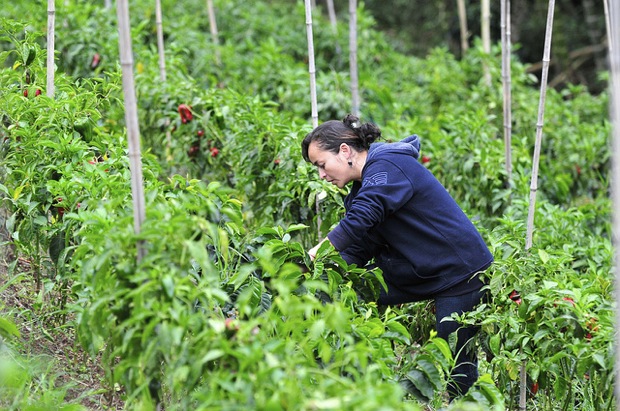by Michael Sheridan of CRS Coffeelands Blog
The application of climate science to coffee has generated an inconvenient truth: The map of the coffeelands in Mesoamerica will be redrawn over the next 40 years, and by 2050 the specialty coffee map will likely be much smaller than it is today. Against the backdrop of the current coffee rust epidemic in Central America, farmers beleaguered by increasing threats to production and persistent market volatility may be asking themselves whether renovating their coffee fields is a good investment Especially for farmers at lower elevations, climate science suggests that the right answer may be no. Farmers who opt out of coffee will need a road map to navigate their transition to new livelihoods strategies, and the kinds of technical support that will keep them from going hungry and degrading Central America’s fragile ecosystems in the process.
CIAT, the International Center for Tropical Agriculture, has been at the leading edge of research into the impacts of climate change on coffee in Central America. Its key findings include:
- Increasing temperatures will push the optimal elevation for coffee higher, reducing the overall area suitable for production of specialty-grade Arabica coffees.
- Farmers at the lower bounds of Arabica coffee production today will not likely be viable producers of specialty-grade Arabica for much longer.
- At a higher band of elevation, farmers may remain viable participants in the specialty coffee trade but will need to adapt their farming systems to mitigate the impacts of higher temperatures and changes in precipitation on coffee production and quality.
- Coffee will gradually become viable in areas currently too high for its production.
- In the absence of improved farming practices and better shade management, rising temperatures will speed the maturation of coffee beans at all elevations and negatively impact cup quality. In regions where Denomination of Origin appellations attest to the distinctiveness and consistence of specific cup profiles, changes in coffee quality could reduce the value of coffee or threaten Denomination of Origin status altogether.
- In the areas of coffee flux — lower elevations where farmers are leaving coffee and higher elevations coming into production — changes in land-use patterns pose significant risks for Mesoamerican ecosystems, especially if farmers raze low-elevation coffee forest for pasture or cropland or poorly manage the transition from rustic high-elevation conservation forests to coffee production.
- At lower elevations where coffee may cease to thrive, other tree crops will be suitable for production even as climate change advances, including cacao and fruit trees.
- The impacts of climate change are highly site-specific; the most effective adaptation plans will be highly localized.
While we were implementing our CAFE Livelihoods project in Mesoamerica, Green Mountain Coffee Roasters funded a collaboration between CIAT and CRS to bring this science to the field. The CUP project — Coffee Under Pressure: Climate Change Adaptation in Mesoamerica — assessed the vulnerability of smallholder coffee farmers to the expected impacts of climate change and helped them develop community-based strategies for adapting to it.
Banks and governments and industry are working now on plans for massive investment to renovate the coffeelands in Mesoamerica. If those investments are to generate strong returns, more of this kind of work is needed.
Michael Sheridan
Michael Sheridan is the Chief Executive Officer of the Coffee Quality Institute, a nonprofit organization with a mission to improve coffee quality and the lives of those who produce it. Sheridan has been leveraging market forces to make coffee work for smallholder farmers and farm workers since 2004. Most recently he directed progressive green coffee sourcing activities and direct-trade partnerships at Intelligentsia Coffee. Prior to that he worked to deliver initiatives in the coffee sector in Central and South America on behalf of Catholic Relief Services.
Comment
2 Comments
Comments are closed.







Although not considered specialty (yet) one adaptation measure at lower elevations could possibly be Robusta coffee.
South India produces 95% of its Arabica coffee at elevations ranging from 3,000′ to 5,000′ MSL, under thick shade with old huge trees, some trees of 50-80 feet high, covering a canopy of about 4,000 to 5,000 sft. Many plantations have a mixture of large native-flowering, fruit & nitrogen providing-trees and Silver Oak trees, the latter which provide a degree of financial aid during price crisis.
This is especially true in Arabica fields, while Robustas are grown with a lighter shade at elevations ranging down from 3,500′ to 2,500′ MSL.
Indian coffee beans mature slowly but steadily, imparting nice aroma & hardness because of overhead high shade. There are other few countries which also grow coffee under shades.